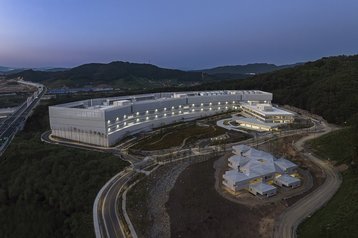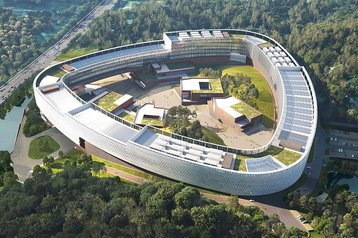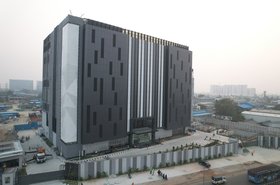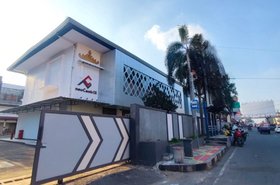South Korean technology firm Naver has opened the first phase of its Sejong campus.
The company held an opening event in the Gak Sejong campus, south of Seoul and north of Daejeon, its second major campus in Korea, alongside the first Gak site in Chuncheon.
The site spans 290,000 sqm (3.1 million sq ft) and is planned to reach 270MW of capacity at densities of 20kW. The site is reportedly able to host 600,000 servers, running Naver's cloud services.
The company has invested just under $500 million in the project.
In planning since 2019, the Sejong site, known as the "Cloud Ring", was officially announced in 2020, with construction starting in 2021. Work was originally due to be completed in late 2022.
Two more phases of development are planned for the Sejong site, with the second beginning in 2025. Images suggest the building opened this week makes up the first third of the planned ring.
Naver CEO Choi Soo-yeon, who attended the opening ceremony on this day, said, "As many changes have recently occurred with data and cloud-based technology, hyperscale data centers have gained recognition as the core infrastructure for technological innovation, but Naver has been preparing for this since the opening of Gak Chuncheon 10 years ago.”
He continued: “The hyperscale data center ‘Gak Sejong,’ will become an engine for technological innovation not only for Naver but also for all industries.”
Naver said the Sejong facility is equipped with a robotic automation system for efficient operations. These include a robot for moving heavy assets (known as GaRo) and an asset management robot (known as SeRO). The former can carry a payload of up to 400kg at speeds of 2m/s, the latter can install server assets into racks.
The machines are linked in real-time with space and service infrastructure through ARC (AI-Robot-Cloud) and ARM-System (Adaptive Robot Management-System) built by Naver Labs.
Sejong uses NAMU (NAVER Air Membrane Unit), an air conditioning system developed in-house, to cool the server room with natural wind.
Waste heat from the facility is used for facility water and floor heating and also is used for a snow melting system that prevents snow from accumulating on on-site roads in winter. The site reportedly uses solar and geothermal power and has been designed to be resistant to earthquakes up to magnitude 7.
The facility is targeting LEED v4 Platinum certification.
Naver Cloud CEO Kim Yu-won said: “As interest in Sovereign AI and Sovereign Cloud has recently increased, we are meeting with customers from various countries and industries, and they are showing great interest not only in Naver’s AI technology but also in the scale and stable operation capabilities of the data center. We expect Sejong to become an outpost for AI and cloud businesses that expand into various industries.”
Naver’s other core data center site is the Gak Chuncheon campus. The 40MW Chuncheon site opened in 2013 and is connected to nearby hydroelectric stations. The site features customer 51u racks which feature 44 servers each at rack densities of 11kW. The company claims a PUE of 1.09.
Naver offers public cloud services through its multi-region Ncloud and its on-premise Neurocloud service.
Naver Cloud currently lists four cloud regions in South Korea, as well as one each in Japan, Germany, Singapore, Hong Kong, and the US (west coast); future regions are planned in the US (east coast), Vietnam, Taiwan, and Thailand.
As well as rack-based appliances for Neurocloud, the company offers an eight-rack container module in densities from 5kW to 11kW.
After recently launching its own LLM known as HyperClova X, Naver is reportedly in talks with chipmaker Samsung about the development of its own AI neural processing unit (NPU) to reduce GPU costs.
“Naver operates the largest-scale GPU optimized for high computer processing in Korea, especially for large-scale AI,” said Naver Cloud CEO Kim.








